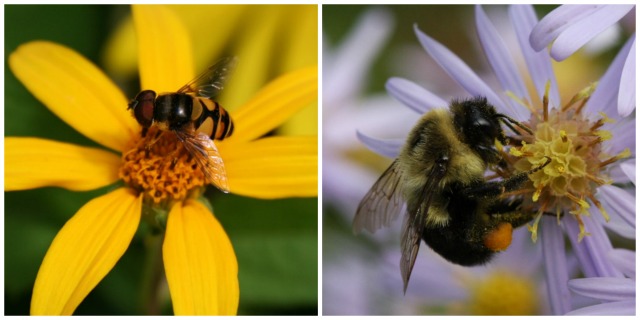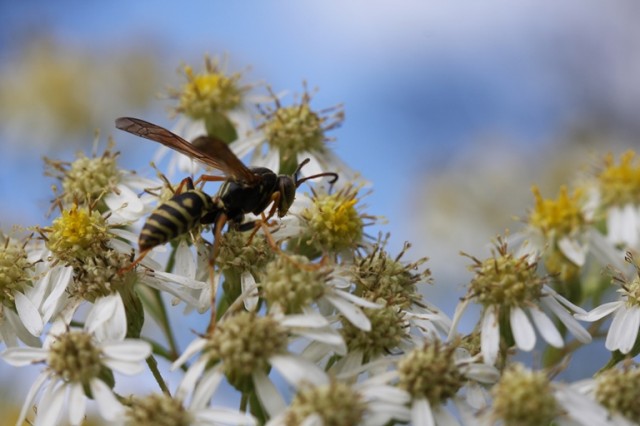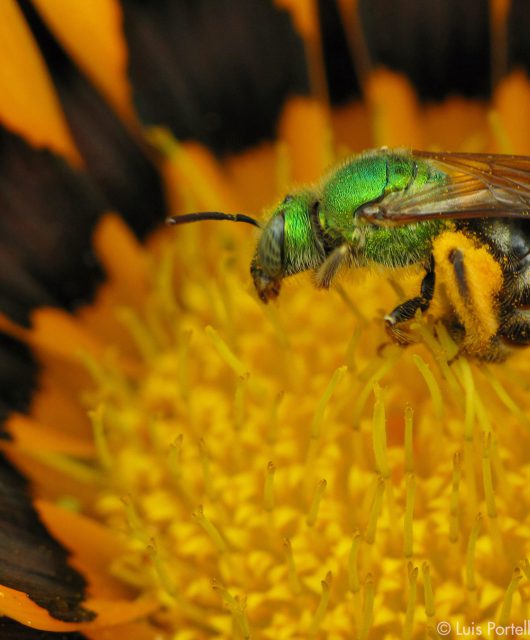
[PHOTO CREDIT: CWF]
Bees and butterflies are busy pollinating the flowers in our Wildlife-friendly Demonstration Garden. It’s always fun to take a minute to watch them at work. It’s then that one can also notice other pollinators, like this hover fly. Also called flower flies or syrphid flies, they are neat to watch in motion, as they can hover in place, like a hummingbird, and zoom around in all directions. Adults feed on pollen and nectar and, in doing so, pollinate our gardens, but that’s not all that’s great about them. Many of their young, larvae that look a bit like small caterpillars, heavily feed on garden pests such as aphids.
Sometimes adult hover flies are mistaken for bees or wasps, part of their means of self-protection from hungry predators. But there is no need for humans to fear them as they are flies and don’t have stingers. There are many species with varying patterns and some even have fuzz but you may be able to tell them apart from bees and wasps by looking at their eyes, which are very fly-like with many little segments, unlike bee eyes that have a very solid dark appearance (see the photos above and below).

[PHOTO CREDIT: CWF]
Hover flies also have one set of wings where bees and wasps have two, although it’s not always easy to see as the forewing and hindwing are so close together. A wasp’s and bee’s antennae are noticeable and bee legs have a place to store pollen, two other features to help tell them apart. Another difference is that wasps have narrower waists than hover flies.

[PHOTO CREDIT: CWF]
Have fun watching the insects in your garden. To learn more about how to help them in your garden, visit CWF’s WildAboutGArdening.org.




